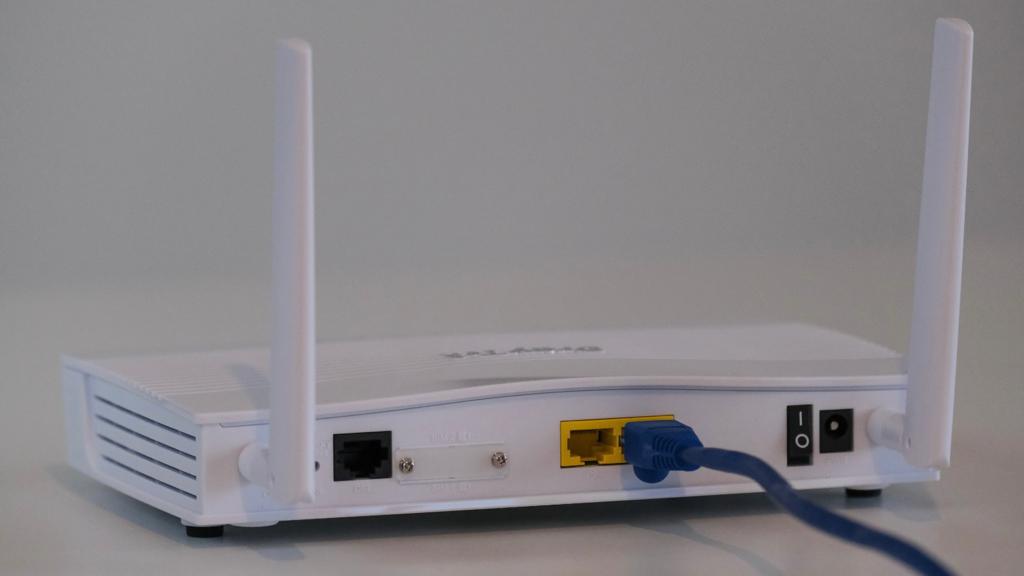
How to Choose a WiFi Router: 10 Tips to Consider
In today’s connected world, WiFi routers are an essential part of our daily lives. They allow us to access the internet wirelessly and enjoy uninterrupted internet connectivity. Choosing the right WiFi router can make a big difference in terms of speed, reliability, and security. In this article, we will provide you with ten tips to consider when choosing a WiFi router.
Tip #1: Consider the Router’s WiFi Standards
WiFi standards have evolved over the years, and the latest standard is WiFi 6, also known as 802.11ax. WiFi 6 is faster, more efficient, and more secure than its predecessors. When choosing a WiFi router, it’s essential to consider its WiFi standard. If you have multiple devices that support WiFi 6, then it’s worth investing in a router that supports this standard.
Tip #2: Look for Dual-Band or Tri-Band Routers
Most modern WiFi routers are either dual-band or tri-band. Dual-band routers operate on two different frequencies, 2.4GHz, and 5GHz. Tri-band routers operate on three different frequencies, two 5GHz and one 2.4GHz. Dual-band routers are sufficient for most households, while tri-band routers are ideal for larger households with many connected devices.
Tip #3: Check the Router’s Maximum Speed
WiFi routers have different maximum speeds, depending on their WiFi standard and the number of antennas they have. The maximum speed is usually indicated on the router’s packaging or specification sheet. When choosing a router, it’s essential to consider your internet speed and the number of devices you have. If you have a high-speed internet connection, then it’s worth investing in a router that can handle those speeds.
Tip #4: Consider the Router’s Antenna Configuration
The antenna configuration of a router can affect its range and signal strength. Most routers have two or three antennas, while some high-end routers have up to eight antennas. Routers with more antennas generally have a more extended range and better signal strength. However, the number of antennas isn’t the only factor that affects range and signal strength. The router’s placement and the layout of your home or office also play a significant role.
Tip #5: Look for a Router with Quality of Service (QoS) Features
Quality of Service (QoS) features allow you to prioritize network traffic to ensure that critical applications get the bandwidth they need. For example, you can prioritize video streaming over file downloads to ensure that your videos play smoothly without buffering. When choosing a router, look for one that has QoS features, especially if you have many devices connected to your network.
Tip #6: Check the Router’s Security Features
Security is an essential consideration when choosing a WiFi router. Look for routers that support WPA3, the latest WiFi security protocol. WPA3 provides better protection against brute-force attacks and makes it harder for hackers to crack your password. Additionally, look for routers that have a built-in firewall and support VPN pass-through, which allows you to use a VPN to access the internet securely.
Tip #7: Consider the Router’s Brand and Support
When buying a router, it’s essential to consider the brand and the support that comes with it. Choose a well-known brand that has a good reputation for quality and reliability. Additionally, look for routers that come with a warranty and excellent customer support. If something goes wrong with your router, you want to be able to get help quickly and easily.
Tip #8: Look for a Router with Guest Network Access
Guest network access is a handy feature that allows you to create a separate network for guests to use without giving them access to your main network. With guest network access, you can control what devices can connect to your main network and limit their access to specific areas. This feature is particularly useful for businesses that want to offer free WiFi to customers or for households that want to provide WiFi to guests without giving them access to their personal devices.
Tip #9: Consider the Router’s Price
WiFi routers come in a wide range of prices, from budget to high-end models. When choosing a router, it’s important to consider your budget and what features you need. Don’t be tempted to buy the cheapest router available, as it may not have the features you need. Conversely, don’t overspend on a router with features you don’t need.
Tip #10: Read Reviews and User Feedback
Finally, before purchasing a WiFi router, it’s a good idea to read reviews and user feedback. Look for reviews from reputable sources, such as tech websites or consumer electronics magazines. Additionally, read user reviews on sites like Amazon or Best Buy to get an idea of how the router performs in real-world situations. User feedback can provide valuable insight into the router’s performance, reliability, and ease of use.
Conclusion
Choosing the right WiFi router can make a big difference in terms of speed, reliability, and security. When choosing a router, consider its WiFi standard, the number of bands, maximum speed, antenna configuration, QoS features, security, brand and support, guest network access, price, and user feedback. By following these tips, you can select a router that meets your needs and provides reliable, secure internet connectivity.













